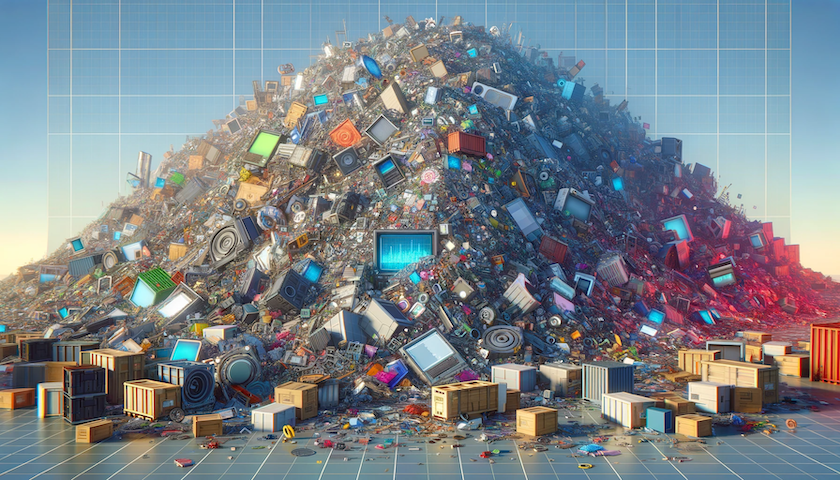
In the wake of the cryptocurrency boom, Non-Fungible Tokens (NFTs) emerged as the digital darlings of the art and collectibles world. However, as we navigate through 2024, the luster of NFTs seems to be fading. A recent report by DappGambl highlights that a staggering 95% of NFT collections are now considered ‘dead,’ with little to no market value. This stark revelation is a wake-up call to the NFT community and potential investors, signaling a shift from the gold rush mentality to a more sustainable and value-oriented approach.
The initial appeal of NFTs lay in their novelty as unique digital assets - be it art, music, or video clips. This allure drove a speculative frenzy, culminating in record-breaking sales and headline-grabbing auctions. However, as with any gold rush, the inevitable market correction has left many investors holding assets with diminished or no value. According to DappGambl, the majority of NFT collections have failed to find a sustainable market, reflecting an oversupply and a lack of adequate demand.
But perhaps more pressing than the market dynamics is the environmental cost of NFTs. The energy-intensive process of minting NFTs on blockchain networks has significant carbon footprints. With thousands of NFTs generating emissions equivalent to that of small countries, the environmental impact is no longer a secondary concern but a primary issue that needs addressing.

Amidst this backdrop, the future of NFTs hinges on a critical pivot - from transient, speculative assets to digital assets with intrinsic, tangible value. The era of NFTs serving merely as digital avatars or speculative art pieces is waning. Instead, the real opportunity lies in leveraging the unique properties of NFTs for applications with inherent utility.
Imagine digital assets that are not just collectibles but integral to digital identity, gaming, real estate, and more. NFTs could represent fractional ownership in physical assets, offer exclusive access to services, or play a crucial role in supply chain management. The key is in their uniqueness and the immutable proof of ownership that blockchain technology provides.
Moreover, the evolution of NFTs must be cognizant of the environmental impact. The shift towards more energy-efficient blockchain protocols or the integration of eco-friendly practices in NFT creation and trading could mitigate the environmental concerns, aligning the NFT market with broader sustainability goals.
In conclusion, while the hype around NFTs as speculative art pieces may be fading, their potential as digital assets with real-world utility is only beginning to be tapped. As the market matures and becomes more discerning, the future of NFTs will likely be defined by their ability to offer value beyond the digital realm, aligning with environmental considerations and practical use cases. The gold rush might be over, but a more sustainable and value-driven era for NFTs is on the horizon.
[This Blog Post was written with the assistance of LLMs]